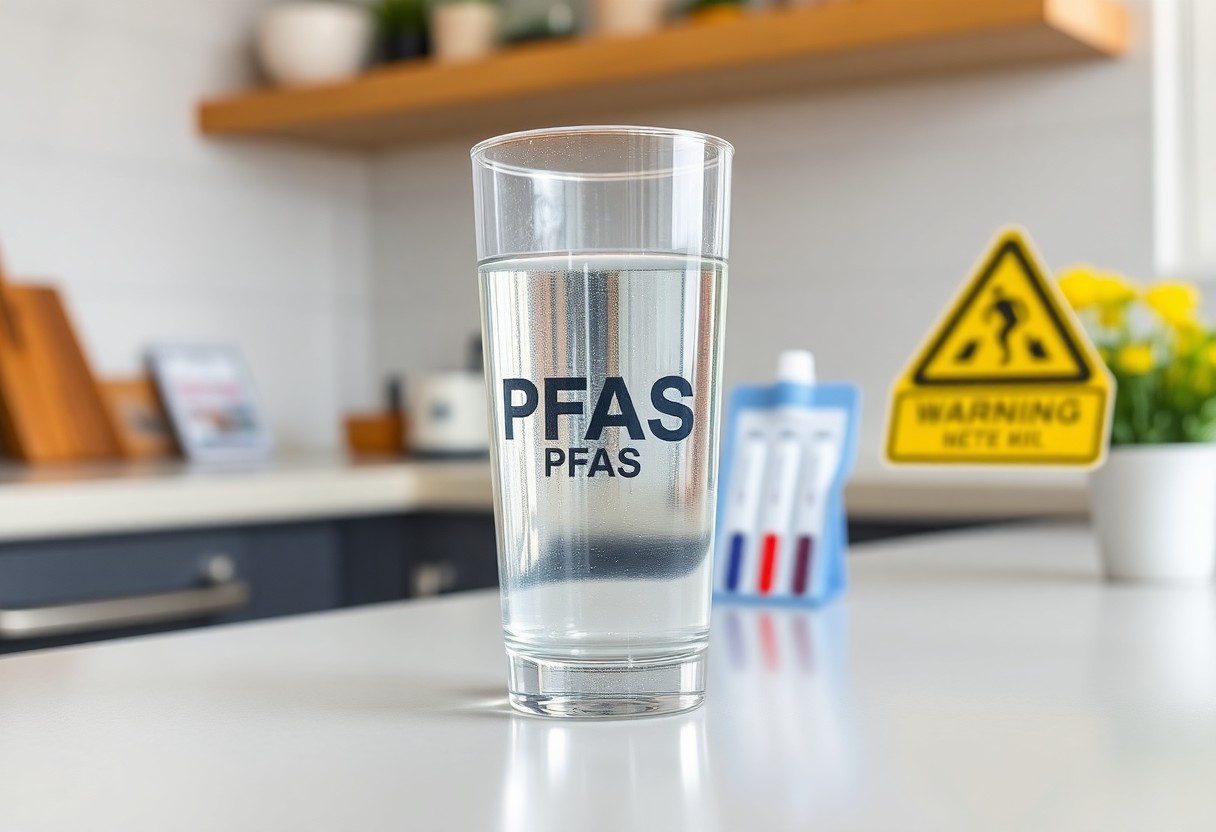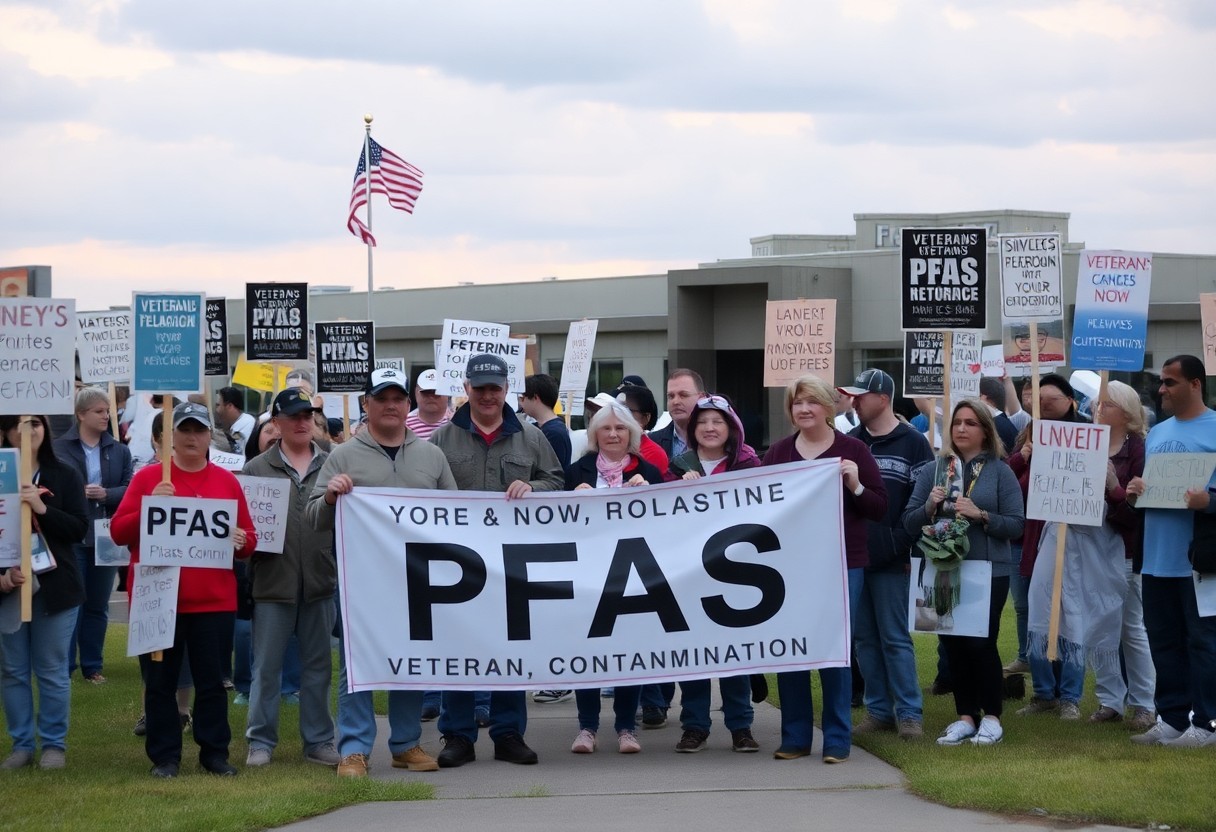You may be aware of the rising concerns surrounding PFAS contamination and its harmful effects on public health and the environment. Minnesota has taken a significant stand against 3M, a major manufacturer linked to this issue, leading to a series of lawsuits aimed at addressing these concerns. As you probe into the details of this legal battle, you’ll discover the implications for both the state and the future of corporate responsibility regarding toxic chemicals. This post will outline what you need to know about the ongoing lawsuits and their potential outcomes.
Background on PFAS
To understand Minnesota’s ongoing PFAS lawsuits against 3M, it’s important to first grasp the implications of these substances. PFAS, or per- and polyfluoroalkyl substances, are man-made chemicals that have gained significant attention due to their widespread contamination and potential risks to human health and the environment.
What are PFAS?
Below you will find that PFAS encompasses a large group of chemicals used in various consumer products due to their water- and grease-resistant properties. Common applications include non-stick cookware, stain-resistant fabrics, and food packaging, leading to their prevalence in everyday life.
Health and Environmental Impacts
Around the world, PFAS have raised alarm due to their persistent nature and potential dangers. Studies have linked these substances to various health complications, including immune system issues, hormonal disruptions, and even certain types of cancer. Moreover, PFAS can contaminate drinking water and accumulate in wildlife, posing serious risks to environmental ecosystems.
Considering the serious implications of PFAS, it is crucial for you to be aware of their effects on both health and the environment. Prolonged exposure to these chemicals can lead to severe health issues, including reproductive harm and developmental disorders in children. Additionally, the environmental consequences can be equally grave, as contaminated sites can affect water sources, disrupt aquatic life, and threaten food chains. Understanding these risks will help empower you to advocate for your health and environment effectively.
Minnesota’s Legal Action Against 3M
You may be aware that Minnesota has initiated significant legal action against 3M regarding the contamination caused by PFAS, commonly referred to as “forever chemicals.” This lawsuit highlights the state’s efforts to hold the company accountable for the environmental damage linked to their products, which have been found in drinking water and local ecosystems. The outcome of this legal battle could have major implications for both public health and the state’s environment.
Overview of the Lawsuits
Above all, the lawsuits filed by Minnesota seek to address the extensive contamination caused by PFAS substances produced by 3M. The state claims that the company has violated environmental laws and seeks compensation for the costs of cleanup and public health measures. You should understand that these lawsuits are part of a broader trend of legal challenges against manufacturers of PFAS, reflecting growing public concern over their environmental and health impacts.
Key Legal Arguments
Below, the key legal arguments in Minnesota’s case against 3M revolve around allegations of negligence and failure to warn the public about the hazards of PFAS. The state asserts that 3M knew the dangers these chemicals posed but continued production without adequate safeguards. You will also find that the lawsuit demands accountability for the cleanup required to restore contaminated water sources.
Legal experts are focusing on the claim that 3M breached its duty of care by not disclosing the dangers associated with PFAS, despite having knowledge of their long-term impacts. The state contends that this negligence has resulted in significant harm to both public health and the environment, necessitating comprehensive remediation efforts. Furthermore, the argument emphasizes that 3M’s actions have generated substantial costs for state resources, as communities are forced to invest heavily in solutions to mitigate exposure to these toxic chemicals. The implications of this case could set a critical precedent in environmental law.
Current Status of the Lawsuits
The litigation against 3M over PFAS contamination is currently active, with Minnesota’s state government aiming for accountability regarding the environmental and health risks posed by these chemicals. As the case moves through the legal system, it highlights the urgency of addressing PFAS issues and the broader implications for public health and environmental safety in Minnesota.
Recent Developments
Any recent updates indicate that the state has intensified its efforts to gather evidence and strengthen its case against 3M. The court proceedings are scrutinizing the company’s historical manufacturing practices and the extent of the damage caused by PFAS in groundwater and drinking water supplies.
Implications for Future Cases
Developments in this lawsuit could set significant precedents for future environmental cases related to PFAS. You will want to watch for how the outcome influences regulations and corporate accountability. A favorable ruling for Minnesota may lead to increased scrutiny on other companies, promoting stronger measures to prevent harmful chemical exposure.
Future cases may also be shaped by the findings from Minnesota’s lawsuits, potentially increasing the pressure on similar companies nationwide involved in PFAS production. If Minnesota is successful, it could encourage other states to pursue similar legal actions, leading to a wave of litigation against polluters. This could ultimately lead to stricter regulations on PFAS usage and greater funding for environmental cleanup, ensuring a safer future for communities impacted by these harmful substances.
3M’s Response
Once again, 3M has made headlines as it navigates the legal challenges presented by Minnesota’s lawsuits. The company’s public relations strategy emphasizes its commitment to accountability and demonstrates a willingness to address claims regarding its PFAS products. This response aims to reassure the public while attempting to mitigate further reputational damage.
Company’s Position
Behind the scenes, 3M maintains that it has acted responsibly in the production and marketing of PFAS, asserting that scientific evidence does not conclusively link their products to health risks. The company positions itself as a leader in environmental stewardship, emphasizing its efforts to reduce PFAS emissions and develop safer alternatives.
Legal Strategies Employed
Below surface level, 3M employs a variety of legal strategies to defend against the lawsuits. This includes challenging the scientific basis of the claims, seeking to dismiss cases on procedural grounds, and filing counterclaims. These tactics not only serve to undermine the plaintiffs’ arguments but also create a delay in proceedings, giving the company time to reassess its strategies.
Hence, 3M’s legal approach is multifaceted and aimed at both defending the company’s reputation and minimizing financial liabilities. By engaging in scientific rebuttals, filing motion dismissals, and leveraging technical defenses, 3M seeks to protect its interests while presenting a narrative that resonates with the public. This strategy can potentially draw out litigation timelines, allowing the company to manage the implications of negative press while working on long-term solutions to PFAS challenges.

Potential Outcomes
Unlike many legal cases, the outcomes of Minnesota’s lawsuits against 3M will likely shape public health policies and environmental regulations. As the litigation unfolds, you can expect varied results that may include hefty financial settlements, changes in manufacturing practices, and enhanced regulatory scrutiny of PFAS chemicals, significantly impacting both 3M and the communities affected.
Financial Implications for 3M
Outcomes of the lawsuit could lead to significant financial ramifications for 3M, potentially affecting its bottom line. You might see the company facing multi-million dollar settlements that could strain its financial resources. This could also influence its stock prices and long-term business strategies as they may need to allocate funds for legal fees and environmental remediation.
Impact on Minnesota Residents
Impact on residents of Minnesota could be profound as these lawsuits aim to address public health concerns associated with PFAS contamination. You might find yourself more informed and aware of the dangers posed by these chemicals, which have been linked to various health issues, including cancer. Moreover, the outcomes could lead to better protective measures and cleanup initiatives that ensure safer drinking water and a healthier environment for you and your community.
And, with the outcome of these lawsuits, you have a stake in a potential future where public health risks are minimized, and environmental standards are enhanced. If successful, strong legal action could pave the way for improved regulations on PFAS chemicals, reducing your exposure to harmful substances and ultimately contributing to a more sustainable and safer living condition. As Minnesota residents advocate for change, you may see a strengthened sense of community and responsibility towards safeguarding your health and environment.
Broader Implications for PFAS Regulation
Keep an eye on the evolving legal landscape surrounding PFAS. Minnesota’s lawsuits against 3M may set a precedent, influencing how states tackle environmental contamination. As public awareness grows, your understanding of PFAS regulation will become increasingly important, shaping future policies and enforcement measures. This ongoing battle highlights the necessity for stronger regulations to protect water resources and human health across the United States.
State vs. Federal Regulatory Landscape
Above all, understanding the differences between state and federal regulations regarding PFAS is imperative. States like Minnesota are taking decisive action, creating stricter standards and frameworks to address contamination, while federal initiatives may lag behind. This disparity calls for you to stay informed about how regulations may impact your community and the potential for harmonization between state and federal efforts.
National Attention on PFAS Contamination
On the national stage, PFAS contamination has garnered widespread media coverage, bringing the issue to the forefront of environmental discussions. Lawmakers are feeling increasing pressure to address this emerging crisis, with your involvement and awareness playing a crucial role in advocating for change.
It is imperative to recognize that PFAS contamination affects numerous communities, leading to potential health risks, environmental degradation, and economic burdens. As the public grows more informed, there’s an opportunity for impactful policies and regulations to emerge at both the state and federal levels. Increased investigation and accountability around PFAS will drive solutions and encourage advancements in environmental safety measures. Therefore, as a concerned citizen, your engagement in this issue can steer future discussions toward more effective management of these harmful substances.
Final Words
With this in mind, as Minnesota’s lawsuits against 3M unfold, it’s crucial for you to stay informed about the potential implications for public health and the environment. Understanding the legal processes and outcomes can help you comprehend how these cases might shape future regulations and accountability measures. You have a role in advocating for cleaner water and supporting policies that address these hazardous substances. Your awareness and engagement can drive change in your community and beyond.



















